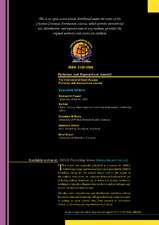| dc.creator | Fujiwara, Masami | |
| dc.date.accessioned | 2014-11-18T21:59:24Z | |
| dc.date.available | 2014-11-18T21:59:24Z | |
| dc.date.issued | 2014-02-10 | |
| dc.identifier.citation | Fujiwara M (2014) Dynamics of Infection of Juvenile Chinook Salmon with Ceratomyxa shasta. Fish Aquac J 5: 089. doi: 10.4172/2150-3508.1000089 | en |
| dc.identifier.uri | http://dx.doi.org/10.4172/2150-3508.1000089 | |
| dc.identifier.uri | https://hdl.handle.net/1969.1/152275 | |
| dc.description.abstract | Mathematical models for the infection of juvenile Chinook salmon (Oncorhynchus tshawytscha) with Ceratomyxa shasta (a myxozoan parasite) in the Klamath River, California, were developed and parameterized with existing data. These models were then used to investigate the effect of three of the environmental conditions thought to be important to the parasite-induced mortality of juvenile Chinook salmon: the stream discharge during the exposure to parasite, the water temperature after infection, and the duration of the exposure to the parasites. The results of this study show that the sensitivity of parasite-induced fish mortality to environmental conditions is higher in spring than fall. Furthermore, the rate of parasite-induced mortality in fish increases with temperature within its range in the spring and summer, when a large number of juvenile fish migrate through the zone where the parasites are
prevalent. These results suggest that temperature may strongly affect the parasite-induced mortality of salmon in this stream. Observed seasonal difference in actinospore concentration could not be explained by the dilution effect due to changes in the stream discharge. This suggests the potential importance of other processes such as seasonal fluctuations in the release and natural mortality rates of actinospores. Finally, a sensitivity analysis was used to compare the effects of various environmental conditions. Under the conditions experienced in June 2008, increasing the discharge by 1 m3/sec would have an effect equivalent to decreasing the exposure duration by 0.26 hours or decreasing the temperature by 0.053°C. This type of analysis is expected to facilitate efforts to restore or mitigate salmon habitats. | en |
| dc.description.sponsorship | The open access fee for this work was funded through the Texas A&M University Open Access to Knowledge (OAK) Fund. | en |
| dc.language.iso | en_US | |
| dc.publisher | OMICS Publishing Group | |
| dc.rights | Attribution 3.0 United States | en |
| dc.rights.uri | http://creativecommons.org/licenses/by/3.0/us/ | |
| dc.title | Dynamics of Infection of Juvenile Chinook Salmon with Ceratomyxa shasta | en |
| dc.type | Article | en |
| local.department | Wildlife and Fisheries Sciences | en |
| dc.rights.requestable | false | en |



